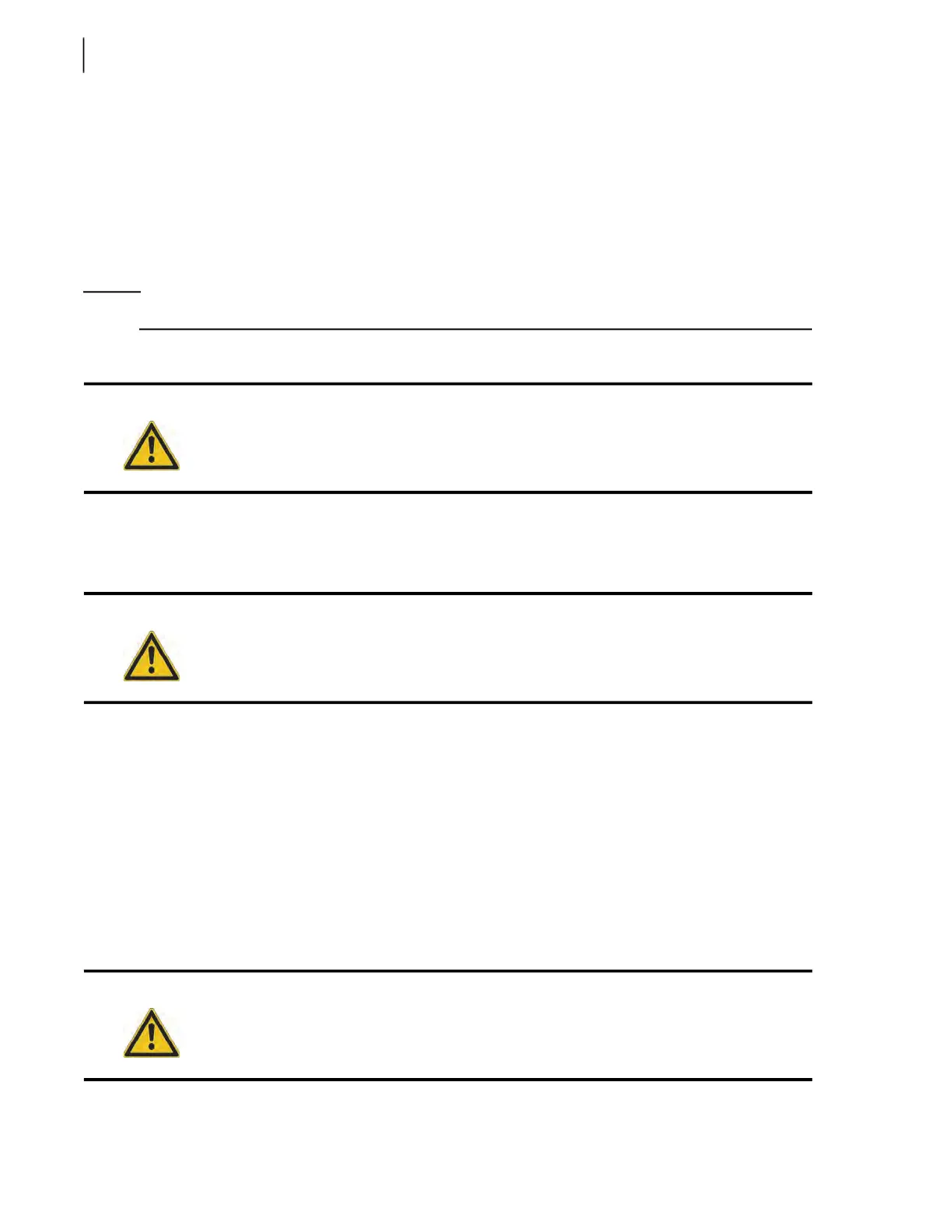284 Hydraulic System
5. With a clean dry cloth, remove all metal particles and debris accumulated at the bottom of the
hydraulic tank through the 3 openings.
6. Once the cleaning is over, reinstall the access cover.
7. Change and install the return filter element (see Replacing Filter Elements on page 282).
8. Reinstall the strainer (see Cleaning Strainer on page 280).
9. Using a filtering screen, refill the tank with high-quality oil until it reaches the ¾ mark on the oil
gauge (see Recommended Lubricants on page 235 for specifications).
NOTE: Oil must be clean and free of any contaminants (dirt, metal particles, sand, etc.).
The entire system will require between 50 and 60 gallons of oil.
10. If the suction line has been replaced, fill the line until oil reaches the pump (see Pump Cavitation
on page 338).
11. Reinstall the filler cap and fully open the shut-off valve.
12. Prime the pump (see Priming New Pump on page 275).
13. Start the engine without pushing on the gas pedal.
The engine MUST run at idle speed for at least 5 minutes to make sure there is no more air in the
system. You can slowly raise the engine RPM only after the engine has run 5 minutes. When you
raise the RPM, always make sure the pump does not make excessive noise.
Hydraulic Cylinders
Inspecting Hydraulic Cylinders
You MUST inspect all hydraulic cylinders at least once a month.
Caution!
It is not recommended to mix different brands and/or grades of oil in the hydraulic tank.
Caution!
Failure to open the shut-off valve may seriously damage the pump and the hydraulic
system.
Danger!
Always lock out and tag out the vehicle when inspecting or performing maintenance on
the vehicle (see Locking Out and Tagging Out the Vehicle on page 14).
